The best New Zealand trees to use for firewood by region
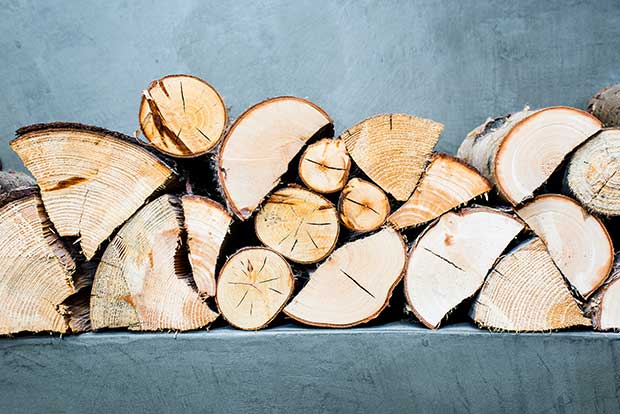
From pohutukawa in the lower North Island, to eucalyptus in Central Otago, here are some of the best firewood trees by region.
Words: Nadene Hall
Eric Cairns has dedicated his life to growing trees. The long-time Tree Crops expert planted most of his block in specialty timber trees, which means he also gets a range of beautiful firewood thanks to thinning and windfall branches.
“I read all the coppicing articles and planted scores of different timber species 20-25 years ago, so am now well qualified to give advice!”
He says the best species for any block, anywhere in NZ, depends on five factors:
• the size of your block;
• your ability to safely harvest;
• your time frames;
• your local climate;
• your soil type/s.
If you have an average size lifestyle block (4ha/10 acres) and don’t want to plant a forest, you still don’t need to plant out a specific firewood block. Plant the right trees and they can do double duty, like firewood, and shelter, amenity, and/or habitat.
The key is planting trees that do well in your region. They should:
• grow fast;
• be at least medium density;
• not grow too large, should you not get around to harvesting it soon enough;
• split easily;
• be hardy;
• be moderately wind firm;
• burn cleanly.
If he had to start again and for firewood over specialty timber, Eric says he’d choose trees that suit his unique conditions on his Upper Hutt block.
“We have some winter frosts, north-facing slopes, 1500mm annual rainfall, heavy clay soils, are subject to rare easterly turbulence but no salt burn.
“First, I would not plant radiata pine. It’s not that flash as firewood, quickly gets out of hand, and – should I be desperate – it is readily available from commercial forests (with a permit). In a small woodlot, it’s a liability as a saw log unless you mill it yourself.
“I would plant coppicing species, but also some that don’t easily regenerate. I’d avoid the weedy species like sycamore and black wattle, and exotic ‘bird food’ berry species which are invariably weedy (eg cherry, holly, berberis, cotoneaster, eleagnus, hawthorn).
Eric’s favourite is Acacia dealbata (silver wattle).
“It grows much faster than its cousin Acacia melanoxylon, has similar density, attractive flowers in spring, and the birds don’t spread the seed. It doesn’t coppice but readily regenerates from its own seed. You could plant it at 2-4m centres, as single species and then thin out to allow the better ones to grow fatter. It tolerates cool wet conditions but absolutely thrives in hot dry conditions too. The bonus is that it has very attractive timber, should you have enough large trees for milling by age 15-20.”
“I would have a range of species and include Eucalyptus microcorys (healthier roots) plus E. meulleriana, E. macrorhyncha, (stringy barks), E. fastigata (healthy everywhere although not ground durable), and perhaps E. bosistoana (durable and hard). These would be planted in mid to late spring at approximately 2m centres (ex-rootrainer stock).
“I’d also interplant some acacias (eg, A. elata, A. falciformis, A. melanoxylon, A. dealbata) but not the very weedy ones. The acacias would provide nitrogen and leaf litter to help breakdown the eucalypt leaves and bark and are capable of growing under a eucalypt canopy. They have attractive timber in their own right. And I still like E. saligna, it is a great coppicer, has red, moderately durable timber and is fairly shade-tolerant.
“The eucalypts would be thinned after 5-8 years to around 8m centres, and I’d retain the best trees for vineyard posts or landscaping timber (as sawn timber starting after 15-20 years). If I was nervous about future log size, they might all be felled before getting too large. Most of the above-mentioned species will coppice quite well.
“There is a lot of light under a thinned eucalypt canopy. Why not occupy some of the understorey space with advance regeneration of a cypress such as a Leyland hybrid or C. ovensii. They burn really well and have desirable timber so they are worth pruning up. Root pathogens that might affect eucalypts probably won’t attack the cypresses, although the cypresses can be vulnerable to windthrow (where tree are uprooted or broken by high winds) and I’ve had a patch of mine topple in an easterly storm. The redwoods and cryptomeria seem more resistant to wind damage, and of course, redwood is another excellent coppicing species.
“Some smaller stem size is always needed to keep low-intensity fires going so in a separate area, I’d plant some kanuka (Kunzea ericoides) or manuka (Leptospermum scoparium). These shade-intolerant natives are renowned for their firewood properties and will self-regenerate, producing harvestable material within 10 or so years. Thinning a manuka stand to about 1m spaces will ensure faster growth. Some kanuka could be retained to grow to a much larger size.
“If you want a predominantly deciduous woodlot, you can include Japanese or hybrid larch which has a splash of autumn and winter colour, cones for kindling and is light enough underneath in winter to support bluebells and daffodils. Then there are oaks, alders, poplars and willows, walnut, hazel, and honey locust that would also do well.
“I haven’t included chestnut (too prone to root rot), robinia or elm (serious suckering and weed potential), and sycamore or cherry (which seed far too freely) even though they all have excellent timbers. Puriri moth is also limiting for some species in our area, especially ash and alders.
“For wetter soils, there is nothing wrong with poplar.
“For those keen on oaks, there are now many species of evergreen Mexican oaks readily available. To grow fine timber trees, these should be close planted and then progressively thinned out (hence the fuelwood) to at least 10-12m spacings.
“If you have animals to feed, tagasaste makes both great drought forage and fuelwood although for firewood, it is best not to prune it. It tends to die out with root rot after about 10 years but produces excellent resinous firewood after 3-4 years, and the pigeons, tui, and bellbirds love it.”
AUCKLAND – NORTH
John & Colleen Brown – Tree Crops Association, Northern region
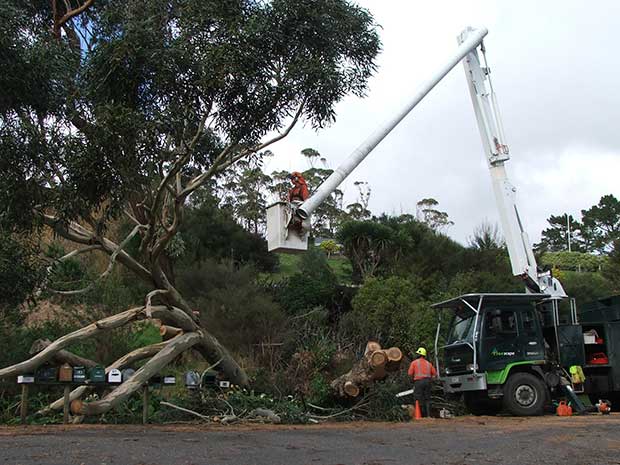
Why John and Colleen Brown don’t like gums
We can’t agree on which firewood we like to use in our wood stove but we can definitely agree on what we wouldn’t plant again: gums! They should all have a sign around their trunks when planted that says ‘I must be harvested before I turn 5’.
The ones we planted have become an embarrassment as they grew like triffids before we got around to harvesting them and now they are too big to fell safely. Here are our favourites:
John: Acacia melanoxylon
Advantages: mostly splits easily, nitrogen-fixing properties, good leaf litter properties, coppices well, hot firewood.
Disadvantages: Borer will attack barked areas when stored creating dusty/dirty firewood, too many suckers after harvesting can be a problem.
Colleen: Poplars (Tasman, Yunnanensis)
Advantages: propagated from poles for free, very even, straight, quick growth, easy to fell, split and stack, coppicing allows harvest every three years, dries quickly and borer doesn’t seem to attack the stored wood, very easy to mulch the branchlets, foliage good as stock food.
Disadvantages: very greedy root system, firewood not as hot as some, but quick heat.
WAIKATO
Sheryn Deans – tree cropper, Tirau
When I was planning my property an elderly gentleman said to me that if I was planting fruit trees, I wouldn’t need to plant firewood trees.
I took his advice and since then have planted about 150 fruit, nut and fodder trees. Each of my trees has multiple purposes, and firewood is simply the end use of them all.
I have been on my property four years now, and this winter I have enough kindling and small wood from our own supply of prunings. Grape prunings have taken the place of pine cones for a fire starter.
As we have an open fire, no doubt this winter I will be learning which wood sparks and which burns well with the bark still on, but I am also looking forward to discovering the different smells of burning cherry, or apple, or hickory (hazelnut). Of course, you can always throw on some citrus rind or rosemary to give a more powerful scent if you prefer.
TARANAKI-CENTRAL DISTRICTS
Denis Hockings – farm forester, Bulls
I can’t find much to disagree on with Eric Cairns. If you have a hectare or two of trees for forestry or horticulture, you won’t need to plant much specifically for firewood.
I would suggest a mix of low-density wood for kindling and starting fires and high-density wood for slower burning and more heat.
The hybrid cypresses are great for firewood – you can shave off kindling thinner than cardboard.
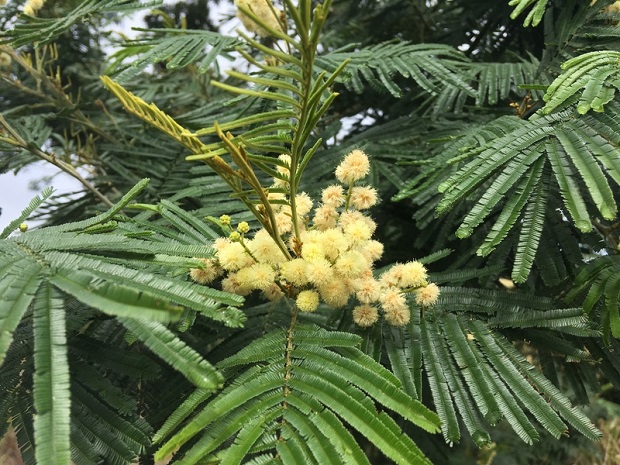
Acacia mearnsii or black wattle is good firewood, and its copious spring flowers provide pollen for bees, but it may become a weed problem.
Among the top options for denser wood, I would nominate the denser acacias. I prefer A. mearnsii or black wattle, but it does have weed potential, it’s very fast-growing. Ditto A. decurrens. Acacias can also be good early spring pollen for bees.
Another group I’d mention are the sheoaks, Casuarina and Allocasuarina. Best firewood I know of is drooping sheoak (Allocasuarina verticillata) which they once used to drive the Murray river steamers. It’s very dense, splits well, burns cleanly, but is rather slow growing. On the other hand, it tolerates harsh, dry, exposed sites, and male trees are attractive in the autumn.
WELLINGTON – HOROWHENUA
Wendy Evans – Wellington/Horowhenua Tree Crops Association
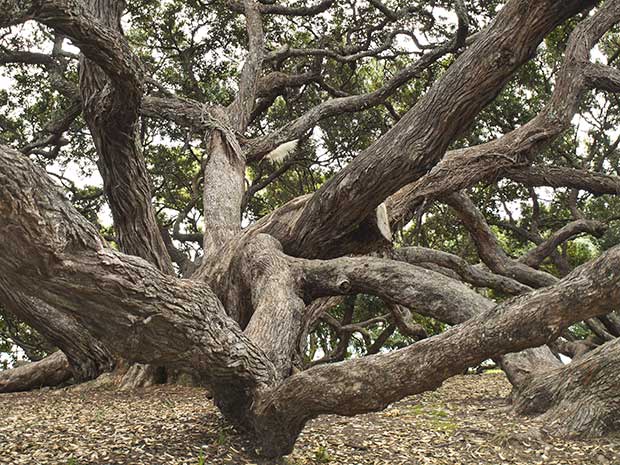
Pohutukawa
It’s a toss-up between tree lucerne (Chamaecytisus palmensis, tagasaste) and pohutukawa. Both are great multi-use trees and yield dense hot firewood.
Tree lucerne is quick growing and provides much-needed wind shelter and the trimmings can be fed to stock or make great compost. The spring growth brings kereru and, being a legume, the roots are nitrogen-fixing. When cut for firewood, even finger-thickness branches are worth keeping for the firewood pile.
The wood of the pohutukawa is tough and springy and makes fantastic axe or hammer handles. Any pieces not suitable for woodworking are fantastic firewood, and the rest makes great mulch. Oh, and pohutukawa honey is the best.
NELSON
Peter Syms – NZ Tree Crops Association, Nelson
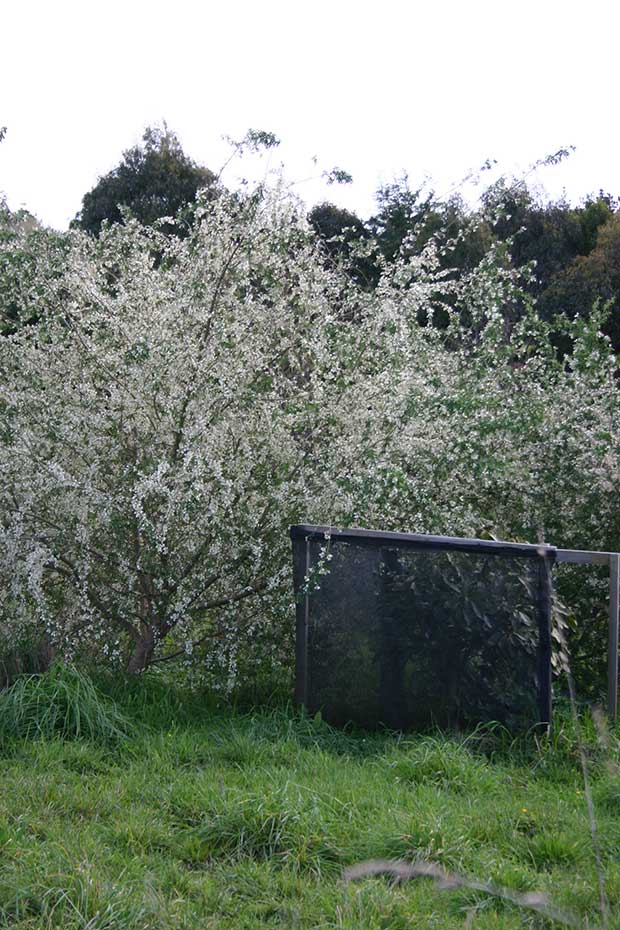
Tree lucerne
Plump kereru browse its lush foliage on a frosty winter’s day, hanging heavily in the branches. Busy bees and bellbirds flit between its flowers in the summer. It’s nitrogen-fixing, with fast growth, and excellent shelter.
So what is this multipurpose gem, originally from the Canary Islands and now naturalised in NZ since the early 1900s? Tagasaste (Chamaecytisus palmensis, also known as tree lucerne). .
We cut big branches of tagasaste in late winter and early spring as nourishing fodder for ewes during lambing. The sheep eat all the leaves and small twigs and chew off the tender bark. What’s left is great firewood, dense and full of energy.
WEST COAST
Ben Gaia – Tree Crops Association, West Coast
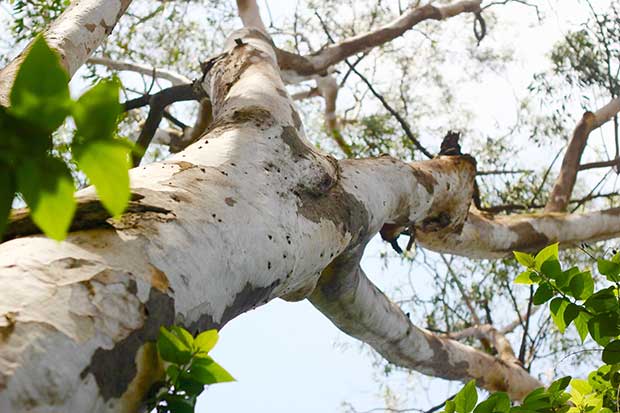
Eucalyptus
A lot of people like Eucalyptus nitens but I find it usually grows too fast so it blows down easily. Both it and Eucalyptus ovata, the swamp gum, grow in quite moist soil (but not West Coast pakihi) and tolerate a -8°C frost, and while their firewood is good, the timber isn’t, and E. nitens doesn’t coppice all that reliably.
My advice is to grow different eucalyptus.
Eucalyptus viminalis and Eucalyptus fastigata both grow nearly as fast, coppice well, get fewer pest attacks, and if you get the odd straight one you can grow it for 30 years and get valuable durable timber.
But best of all I think is Eucalyptus botrioides, but where the first four are frost-tolerant, E. botrioides is a coastal tree and prefers good drainage. All gums must be fed and weeded or they will die.
COASTAL OTAGO
Bruce Parker – NZ Tree Crops Association, Coastal Otago
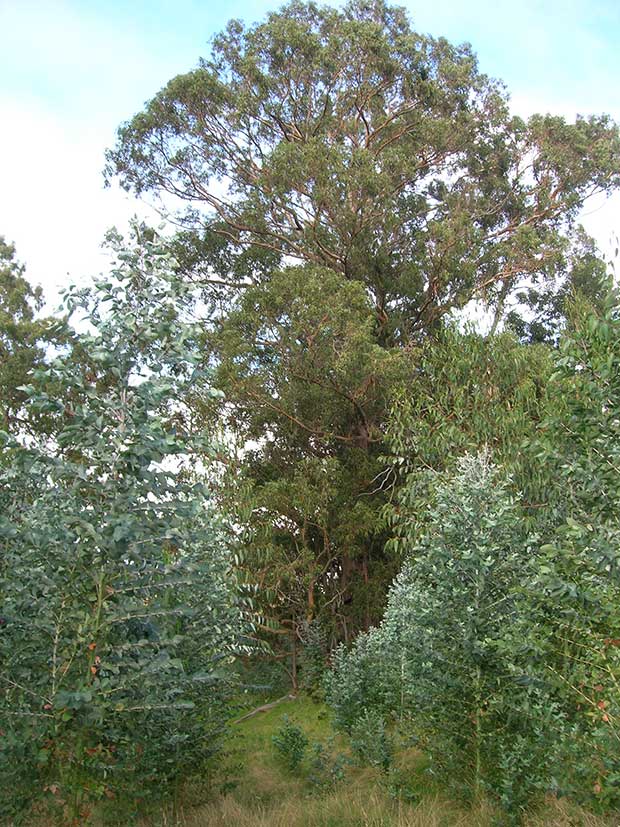
Eucalyptus botyroides
The most popular firewood species planted in the deep south in recent years is Eucalyptus nitens as it coppices, can be cut in about eight years, has long straight trunks with little slash, and burns hot.
Manuka (Leptospermum scoparium) is another good choice. This tree self-sows, establishes and grows quickly, and copes with drought, frost, cold, wet and acidic conditions. It has a pleasant perfume, is not palatable to stock, and makes a special honey. Manuka is not a tall tree so it’s easy to fell and it is not difficult to cut the slash from the firewood.
It is best split when green. The sap is very thin and if weathered outside for a season the wood is ready for burning.
Manuka has a flaky bark which makes excellent kindling. The wood burns very hot – and the leaves very hot – creating long lasting embers and little ash.
Kanuka (Kunzea ericoides) is similar but taller and grows in clay. However, both of these trees take many years to be mature for cutting.
CENTRAL OTAGO
Ian Stewart – NZ Tree Crops Association, Central Otago
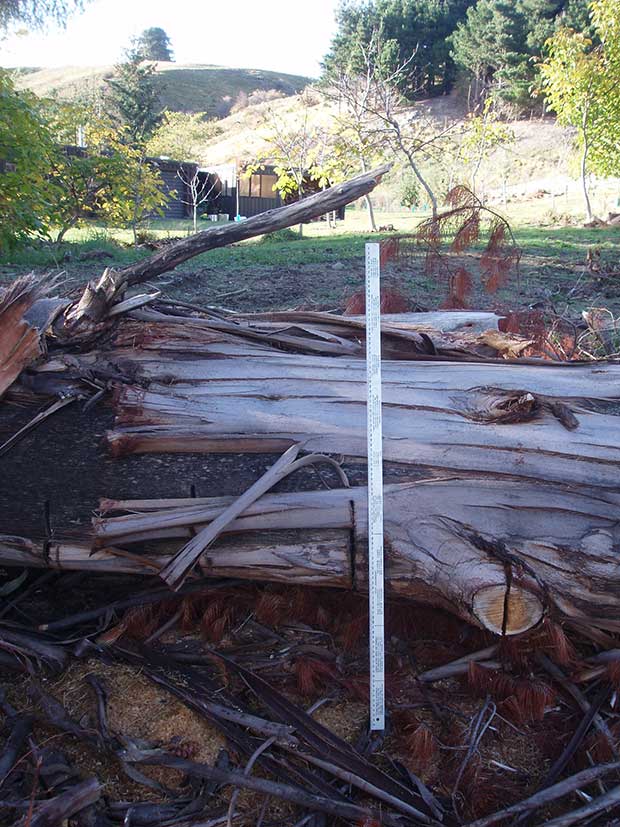
Why Ian Stewart doesn’t like gums
Our lifestyle block is above the valley between Queenstown and Arrowtown, near Coronet Peak, so we get cold winters, warm summers, and around 600mm annual rainfall.
Twenty years ago we planted 30 Eucalyptus nitens, dividing them between the flat and the hill above. Those on the flat were killed by frost the first winter but those on the hill have provided excellent firewood and the older trees have self-seeded. They coppice well and this is strongly recommended unless you have access to a large chainsaw and a log splitter.
The pictures show our last original tree, recently felled. The metre stick is against the trunk, 4m from ground level. The tallest self-seeded sapling is 4.5m at two years of age.
Do not plant any eucalypts within 30m of food plants, eg your vegetable gardens, as their roots go a long way.
Love this story? Subscribe now!
 This article first appeared in NZ Lifestyle Block Magazine.
This article first appeared in NZ Lifestyle Block Magazine.

